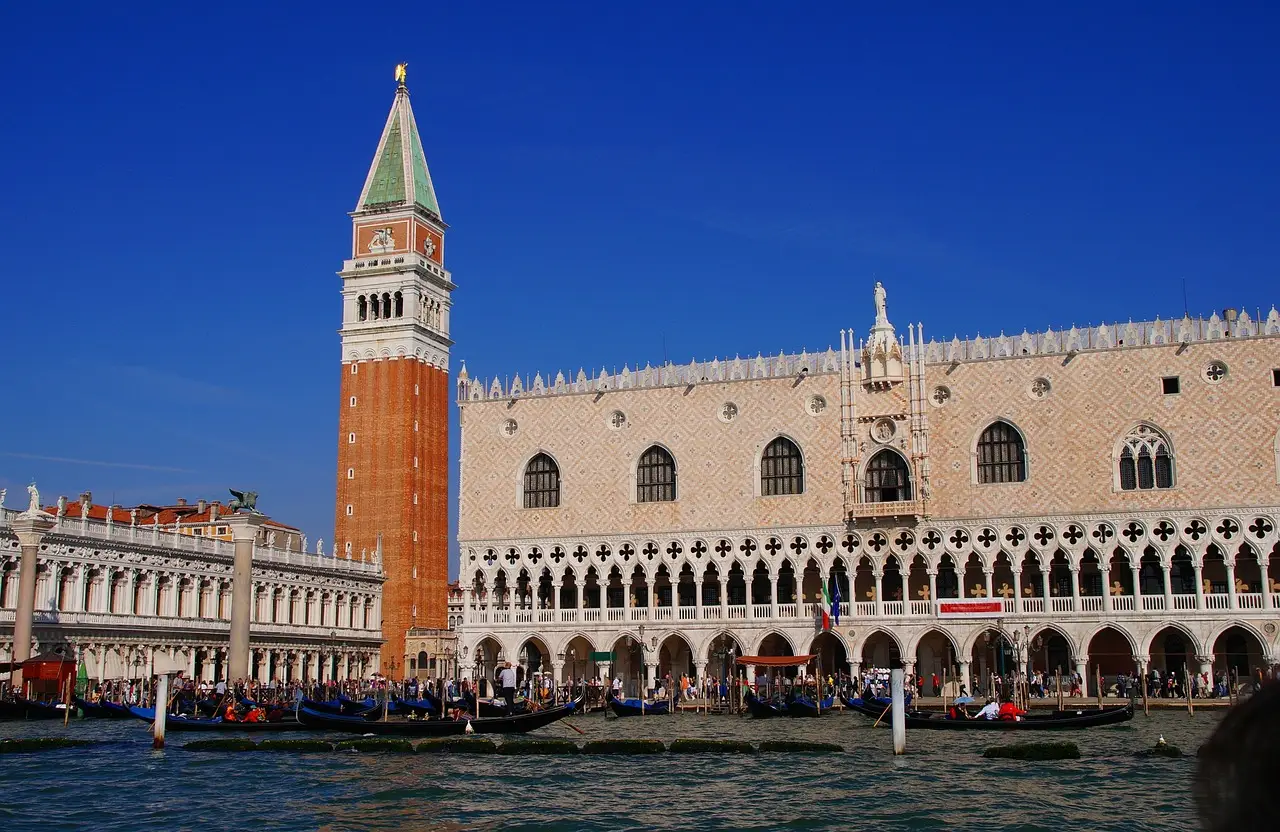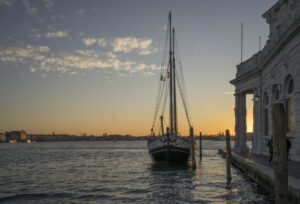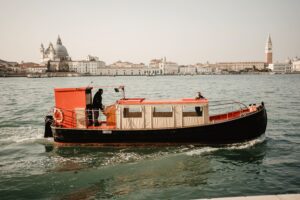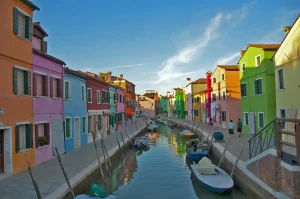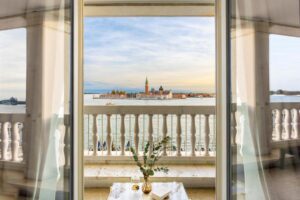Beyond the Gondolas: What Daily Life in Venice Is Really Like
When most travelers picture Venice, they imagine gondolas gliding under bridges, Carnival masks sparkling in shop windows, and sunsets melting into the lagoon. But beneath the beauty lies another Venice — the one locals actually live in every day.
This is the Venice where children go to school by boat, neighbors chat at the market, and artisans still work by hand to keep centuries-old traditions alive. It’s not a museum; it’s a living, breathing city — fragile, proud, and resilient.
In this guide, Tour Leader Venice takes you beyond the postcards to show you how Venetians really live: from schoolboats to markets, from crafts to community, and why preserving this way of life matters now more than ever.
🏫 Part 1 — Growing Up in a City Without Cars
1.1 Venice’s Quietest Commute
Imagine being eight years old and your school bus isn’t a bus — it’s a boat. That’s everyday life for Venetian children. Venice is one of the few cities in the world without cars. No traffic lights. No honking horns. Just footsteps and waves.
- Children walk or take small boats to school.
- Parents guide them across bridges and along narrow calli.
- Instead of yellow buses, Venice has school boats — special ACTV vessels that collect children along the Grand Canal and lagoon islands.
It’s peaceful, charming, and a little surreal — a reminder that life here truly flows to a different rhythm.
1.2 Schools Among Palaces
Venice’s education system mirrors the rest of Italy, but geography makes it unique.
- Elementary schools are scattered through the six sestieri so kids can reach them on foot.
- High schools are fewer, meaning older students commute across canals daily.
- Ca’ Foscari University — the city’s main university — occupies Renaissance palaces, where students attend economics or art classes inside marble-floored halls once used by merchants.
Learning in Venice means living inside history.
1.3 The Challenges of a Watery Classroom
- Acqua alta (high water): During winter tides, children walk to school in rubber boots along raised wooden platforms.
- Accessibility: Bridges without ramps make movement difficult for those with disabilities.
- Depopulation: With fewer than 50,000 residents today (down from 175,000 in 1950), some schools have merged or closed.
Yet life goes on. Children still laugh in the campi (squares), play football on stone pavements, and grow up surrounded by the quiet beauty of canals instead of traffic noise.
For visitors, glimpsing children in uniform running across a bridge is the surest sign Venice still has a heartbeat.
🧺 Part 2 — Markets: The Soul of Venetian Life
2.1 Rialto Market: 700 Years of Tradition
If the Grand Canal is Venice’s artery, the Rialto Market is its heart. For over seven centuries, locals have bought their fish, vegetables, and gossip here.
- Pescheria (Fish Market): A symphony of colors and scents — soft-shell crabs (moeche), squid, shrimp, and sea bass from the lagoon.
- Erberia (Produce Market): Seasonal fruit and vegetables from the mainland and the islands — artichokes from Sant’Erasmo, pumpkins from Treviso.
Every morning, Venetians greet their favorite vendors by name, exchange recipes, and debate the weather. The market isn’t just about food — it’s about belonging.
Picture a grandmother leaning over a stall, instructing the fishmonger to choose sardines “only good enough for sarde in saor.” That’s Rialto at its best.
🍷 Join a Rialto Food Tour — Taste Venice Like a Local →
2.2 Neighborhood Markets
Not all Venetians shop at Rialto. In quieter areas, smaller markets keep community life alive:
- Campo Santa Margherita (Dorsoduro): A lively mix of students and locals grabbing produce and coffee.
- Cannaregio: Morning stalls with fruit, bread, and gossip far from the tourist flow.
- Mestre (mainland): Where many families who moved off the islands now shop in larger supermarkets.
Each district has its own rhythm — proof that daily life here still beats beneath the tourist surface.
2.3 Shopping Without Cars
In a city without wheels, everything moves by water and handcart. Before dawn, delivery boats glide through the canals, unloading crates of vegetables and wine. Porters balance boxes on two-wheeled carts, weaving through alleys and over bridges with astonishing grace.
Watching this silent ballet is to witness Venice’s daily miracle — an entire logistics system powered by human strength and tide.
2.4 Visiting Markets Like a Venetian
- Arrive early (8–10 AM) before stalls close at midday.
- Let vendors serve you — touching produce is frowned upon.
- Sample seasonal specialties: spring asparagus, autumn radicchio, winter artichokes.
- Visit with a guide who explains what you see, smell, and taste.
At Tour Leader Venice, our guides weave history and flavor into one story — showing that food here is as much culture as cuisine.
🔥 Part 3 — Disappearing Crafts: Venice’s Hands at Work
3.1 Murano Glass: Fire and Fragility
Murano was once the world capital of glassmaking. Today, only a few dozen furnaces remain. Soaring energy costs, cheap imitations, and the long years required to master the art threaten its future.
Still, in true Venetian spirit, the masters continue. Inside glowing workshops, artisans blow molten glass at 1,200°C into chandeliers, vases, and sculptures — shaping beauty from fire.
Our Murano Workshop Tour gives you access to these authentic studios — no sales tricks, just artistry.
3.2 Burano Lace: Thread by Thread
On colorful Burano, lace is more than fashion — it’s history. Women here once stitched for queens and popes, spending months creating pieces so intricate they seemed made of air.
Today, machine-made imitations threaten this delicate art, but a few workshops still survive. In the Lace Museum and private studios, you can watch artisans sew patterns passed down for centuries.
🧵 Visit Burano & Learn the Secrets of Venetian Lace →
3.3 Gondola Building: The Last Squeri
Each gondola is handmade, balanced to perfection, and crafted from eight different types of wood. The city’s last traditional boatyards — called squeri — are where Venice’s most iconic symbol still takes shape.
At Squero San Trovaso, master carpenters work with the same tools and proportions used for centuries. Watching them shape the elegant curve of a hull feels like watching time itself being carved.
Each gondola takes months to complete and can last up to 20 years — proof that patience still floats in Venice.
3.4 Mask Making: Faces of Carnival
Venice’s Carnival is world-famous, but behind every mask is an artisan’s hand. Real masks are made of papier-mâché, not plastic, and painted one by one. Yet today, only a few ateliers remain, hidden in narrow alleys.
Our Venetian Mask Workshop lets you meet these makers — and paint your own mask to take home, a personal souvenir of Venice’s artistry.
3.5 Other Hidden Crafts
- Gianni Basso’s print shop: An antique press producing handmade stationery.
- Tessitura Bevilacqua: Velvet and brocade woven on 18th-century looms.
- Friulane shoes: Soft velvet slippers once worn by gondoliers, now reborn as eco-luxury footwear.
Each craft is a small rebellion against mass tourism — proof that authenticity still breathes here.
🏠 Part 4 — Everyday Challenges of Living in Venice
4.1 Fewer Residents, More Tourists
Venice’s greatest crisis isn’t flooding — it’s depopulation. In 1950, 175,000 people lived here. Today, fewer than 50,000 remain. Rising rents, limited services, and the dominance of short-term rentals push families to the mainland.
Fewer locals mean fewer children, fewer markets, and fewer apprentices — the quiet erosion of community.
4.2 Tourism Pressure
Over 20 million visitors arrive each year, many staying just a few hours. While tourism sustains the economy, it also strains public spaces and resources. For locals, even crossing the Rialto Bridge at noon can feel like a marathon.
Yet Venetians adapt, scheduling errands early, taking secret routes, and continuing traditions that define who they are.
4.3 The Strength of Community
Despite everything, Venice’s spirit endures. Festivals like the Regata Storica and Festa del Redentore fill the canals with celebration. Rowing clubs teach kids to navigate the lagoon, and neighbors still meet in campi to talk as their grandparents did.
In a world moving too fast, Venice remains defiantly slow — and that’s its magic.
🛶 Part 5 — How Visitors Can Experience Real Venetian Life
5.1 See It With a Local
The difference between seeing Venice and understanding it is local knowledge. A visitor alone sees a fish stall. With a local guide, you learn how fishermen catch moeche, why glassmakers guard their secrets, and how Venetians navigate a city without cars or wheels.
Our Off-the-Beaten-Path Tour reveals neighborhoods most travelers never reach — where children play in squares, artisans work in silence, and the city still breathes like it did centuries ago.
5.2 Why Choose Tour Leader Venice
- 👣 We live here. We know which streets flood, which cafés locals love, and which workshops are authentic.
- 🎨 We connect you to artisans, not showrooms.
- 🕰️ We adapt to your rhythm, letting you see Venice as residents do — unhurried, intimate, real.
With Tour Leader Venice, you don’t just take a tour — you step into daily life. You meet people who call this fragile city home, and for a few hours, you live like they do.
❤️ Conclusion — Venice, A Living City
Venice isn’t a theme park. It’s a city of people — teachers, rowers, artisans, and children who still cross bridges every morning to reach school. Its beauty isn’t only in its palaces, but in the everyday gestures of those who keep it alive.
Yes, Venice faces challenges — depopulation, mass tourism, rising tides — but it endures because of its community and its traditions.
When you walk with us through the markets, hear the echo of footsteps on bridges, or talk to a glassmaker by his furnace, you’ll feel it too: Venice is alive.
🌊 Experience Real Life in Venice with Tour Leader Venice →
Do people still live full-time in Venice?
Yes — though fewer than before. Around 50,000 residents still live in the historic center, navigating bridges and canals as part of daily life. Children go to school by boat, neighbors chat in local markets, and artisans keep centuries-old crafts alive. Despite the challenges of high rents and frequent floods, Venice remains a living city, not a museum — and every visit that supports locals helps it stay that way.
How do Venetians get around without cars?
Venetians move entirely on foot or by water. Instead of buses or taxis, they use vaporetti (public waterbuses), traghetti (gondola ferries), and private boats. Deliveries, school commutes, even garbage collection — all happen by boat. The rhythm is slower, quieter, and deeply human. Visitors can experience it too through a Venice tour of the lagoon — discover the hidden gems or a private boat tour of the Grand Canal.
How can travelers experience authentic Venetian life?
Skip the tourist traps and spend time where locals live. Visit early-morning markets like Rialto or Cannaregio, take part in artisan workshops such as Murano glassblowing or Venetian mask-making, and explore neighborhoods with a certified local guide. Joining our Off-the-Beaten-Path Venice Tour lets you see the real city — where Venetians live, work, and dream every day.

